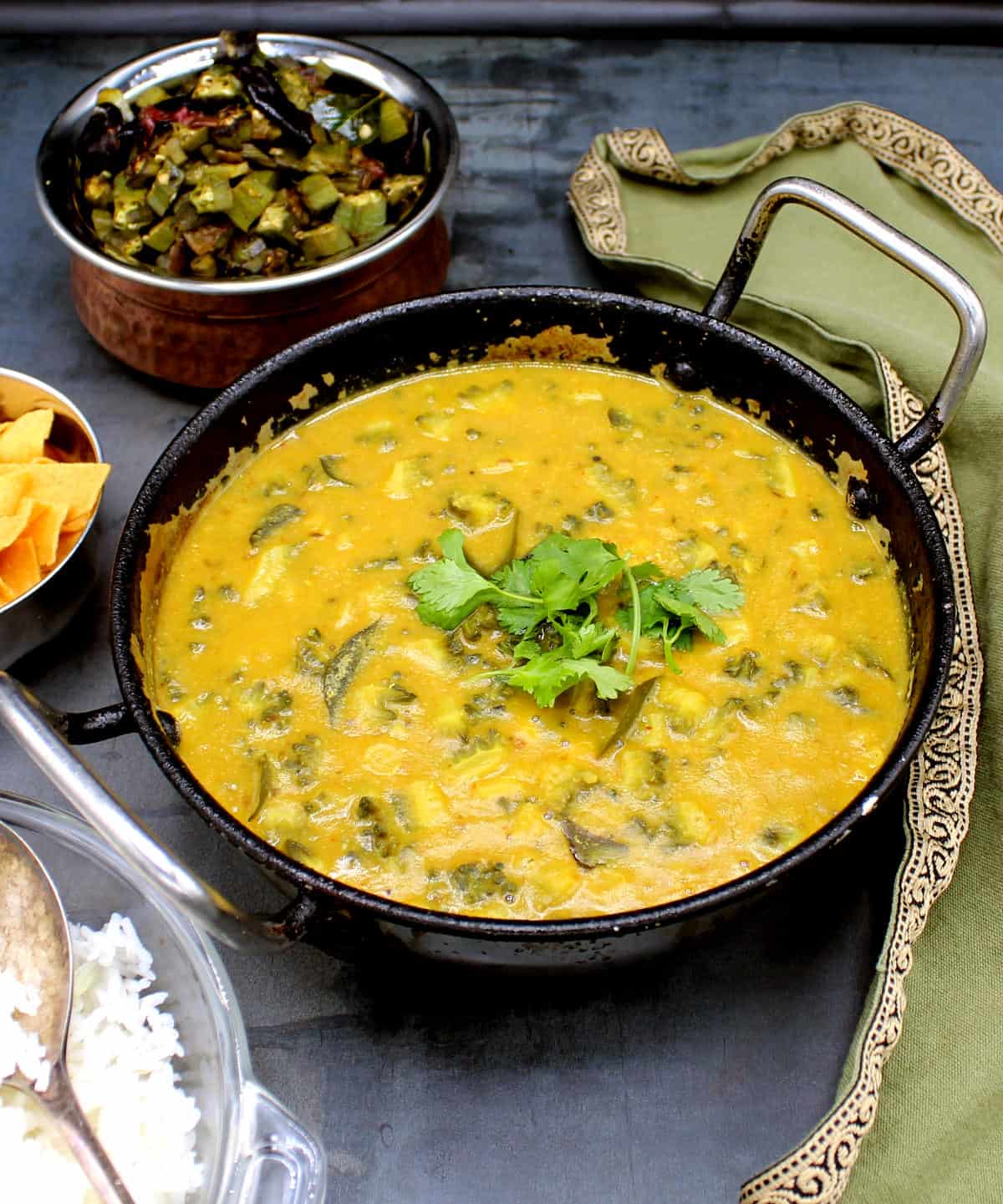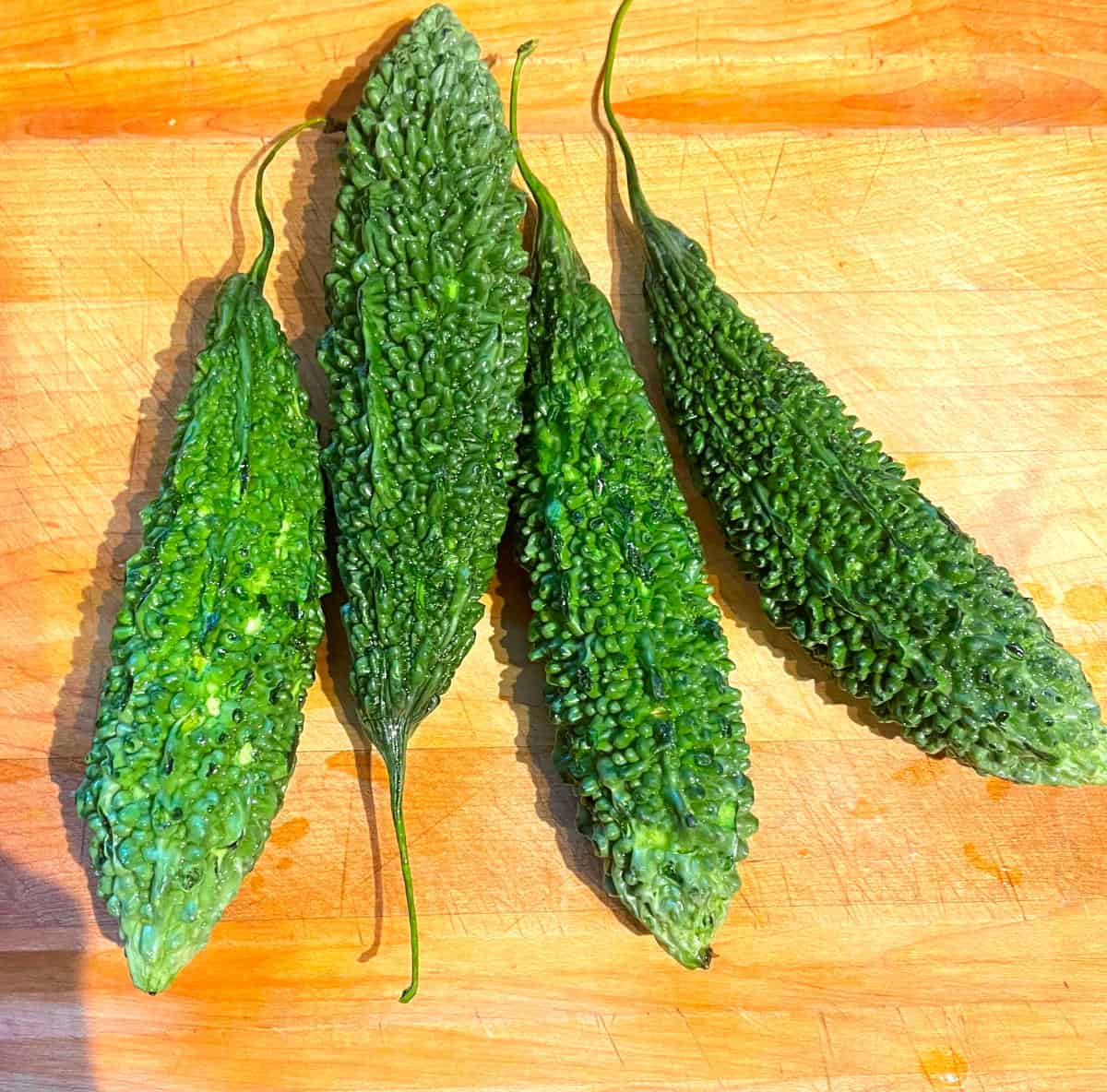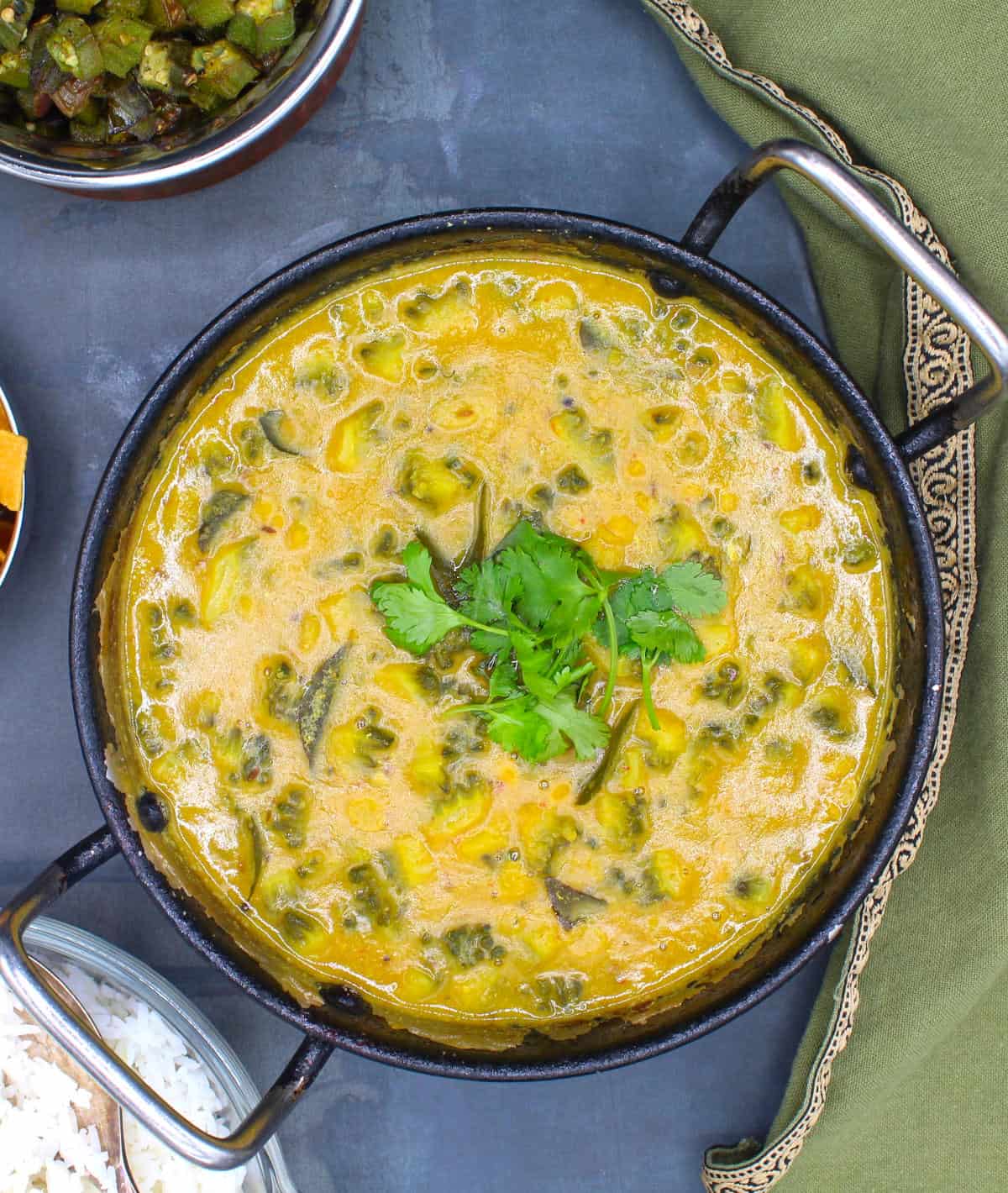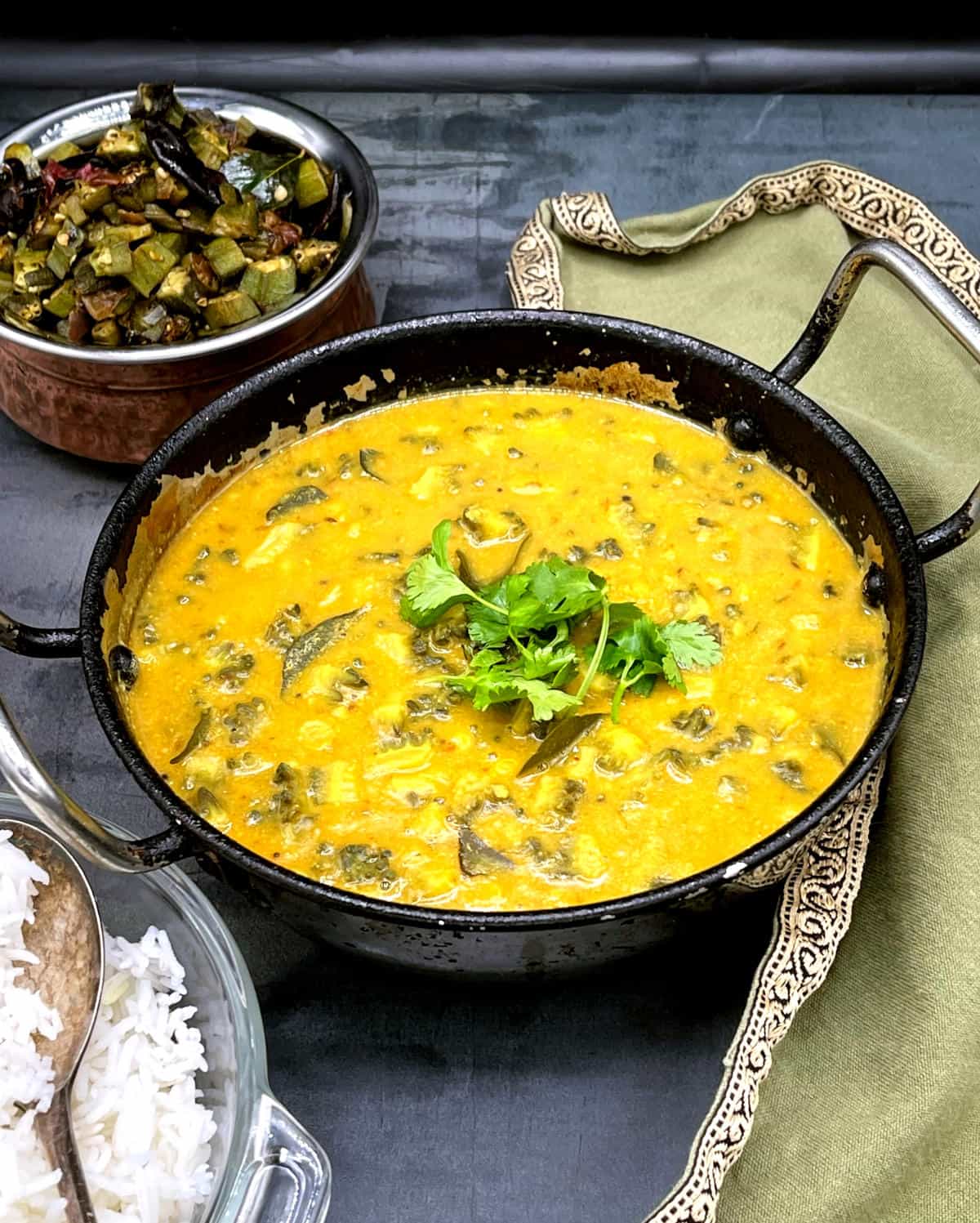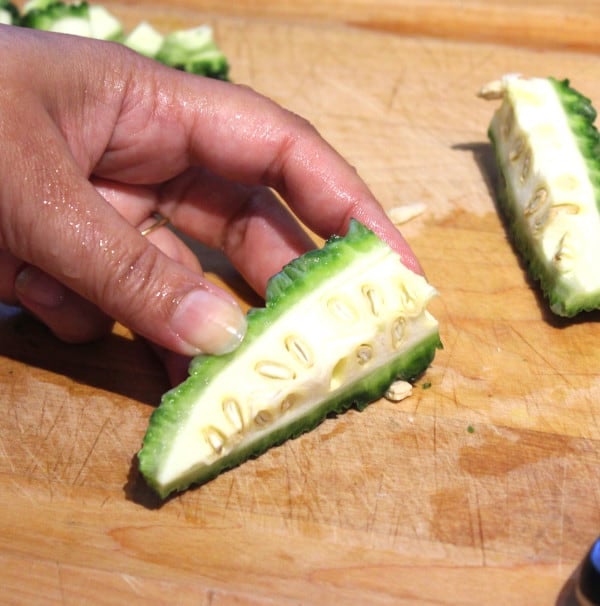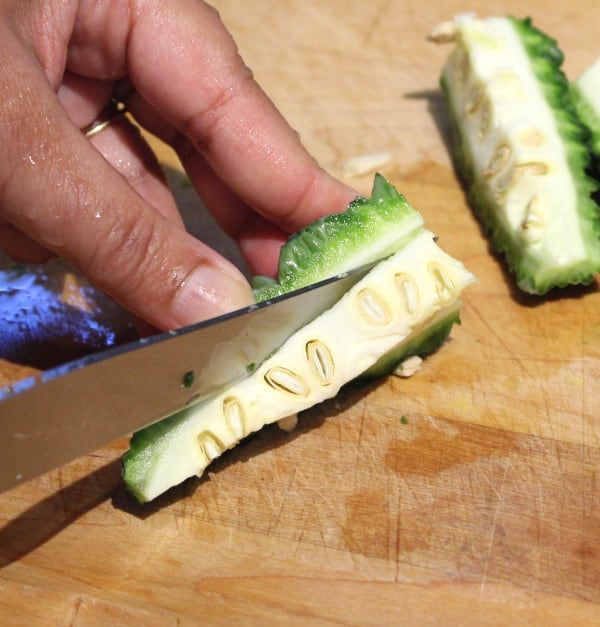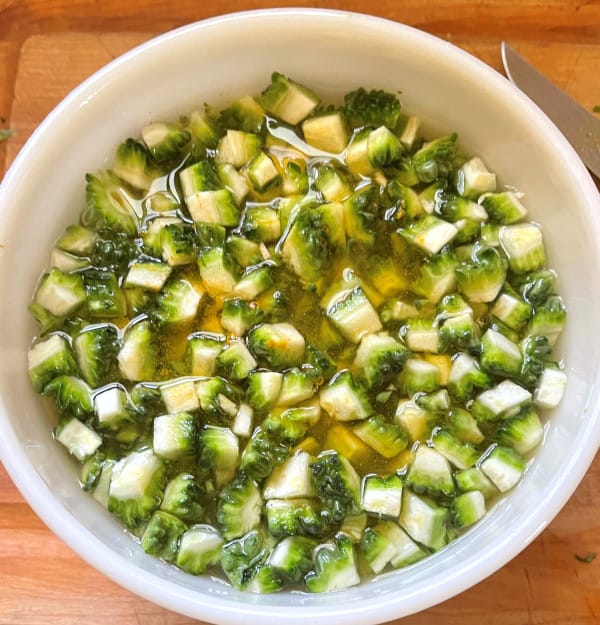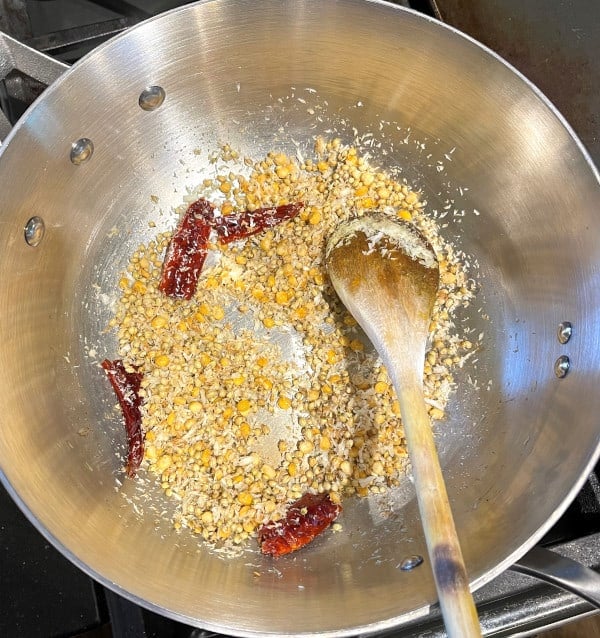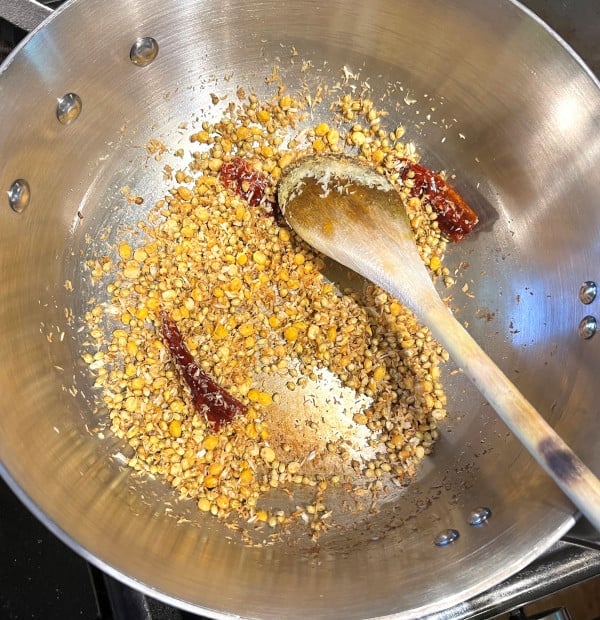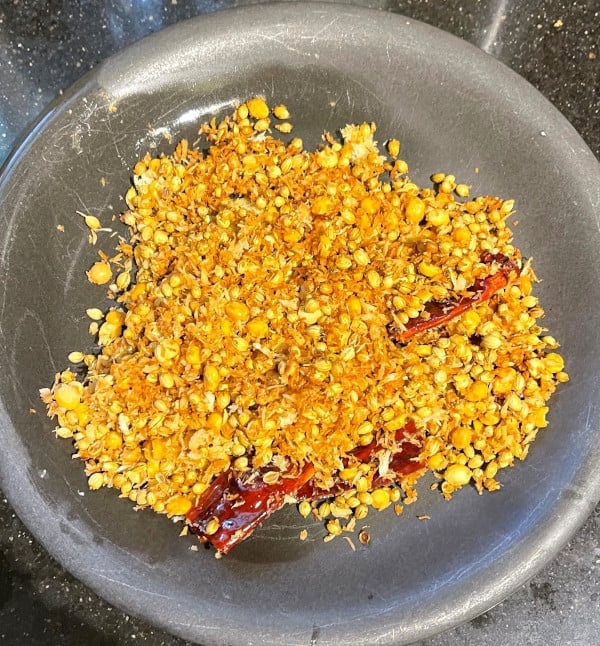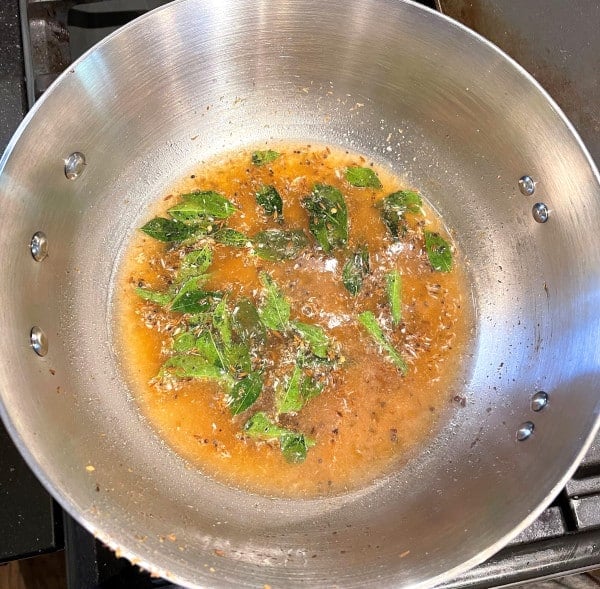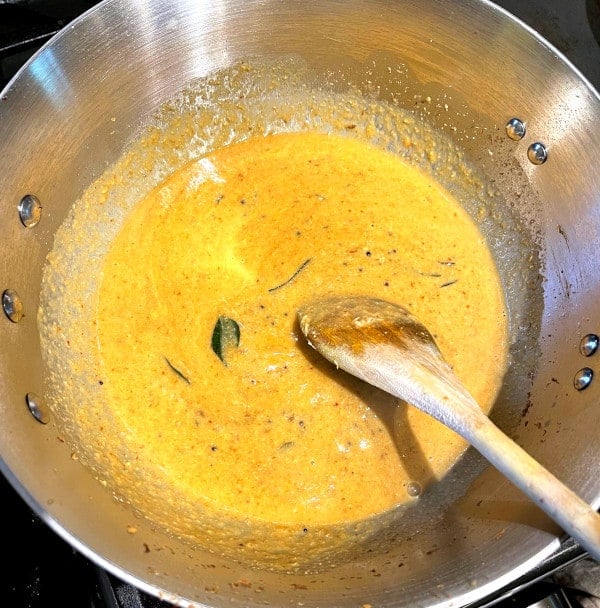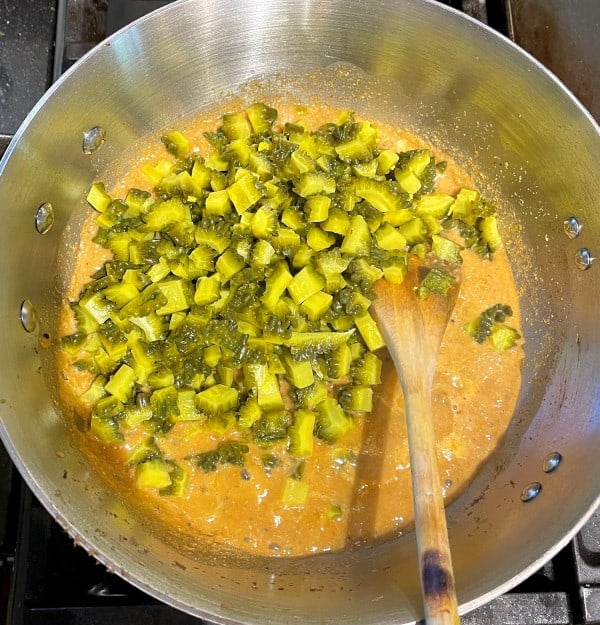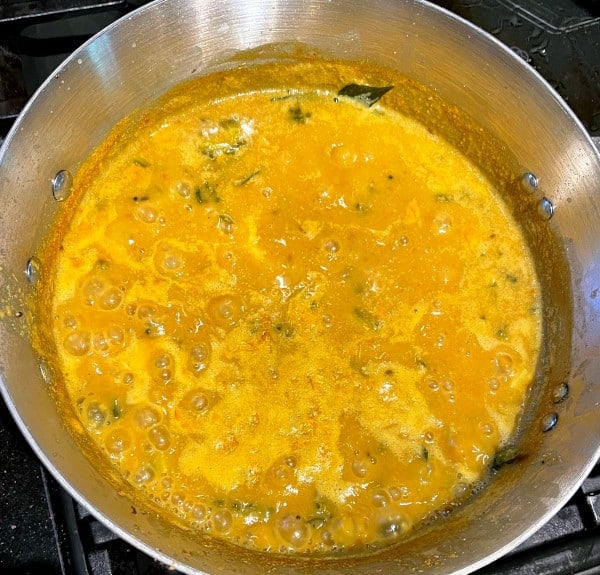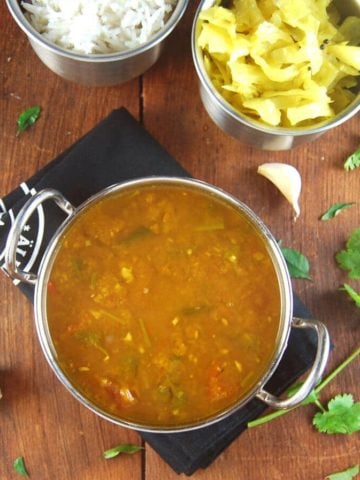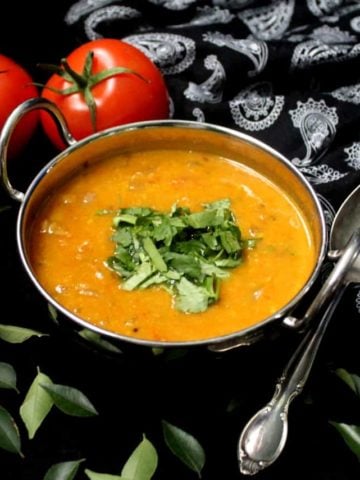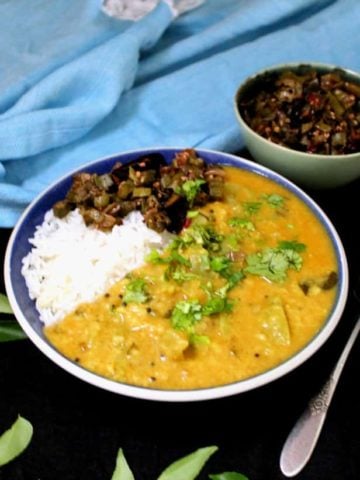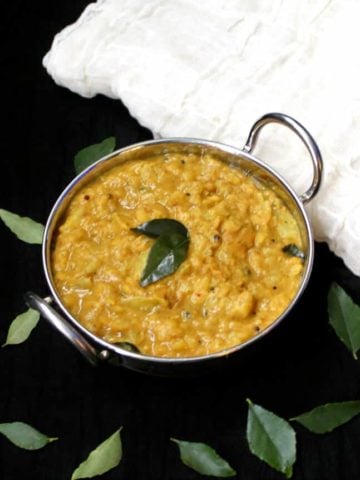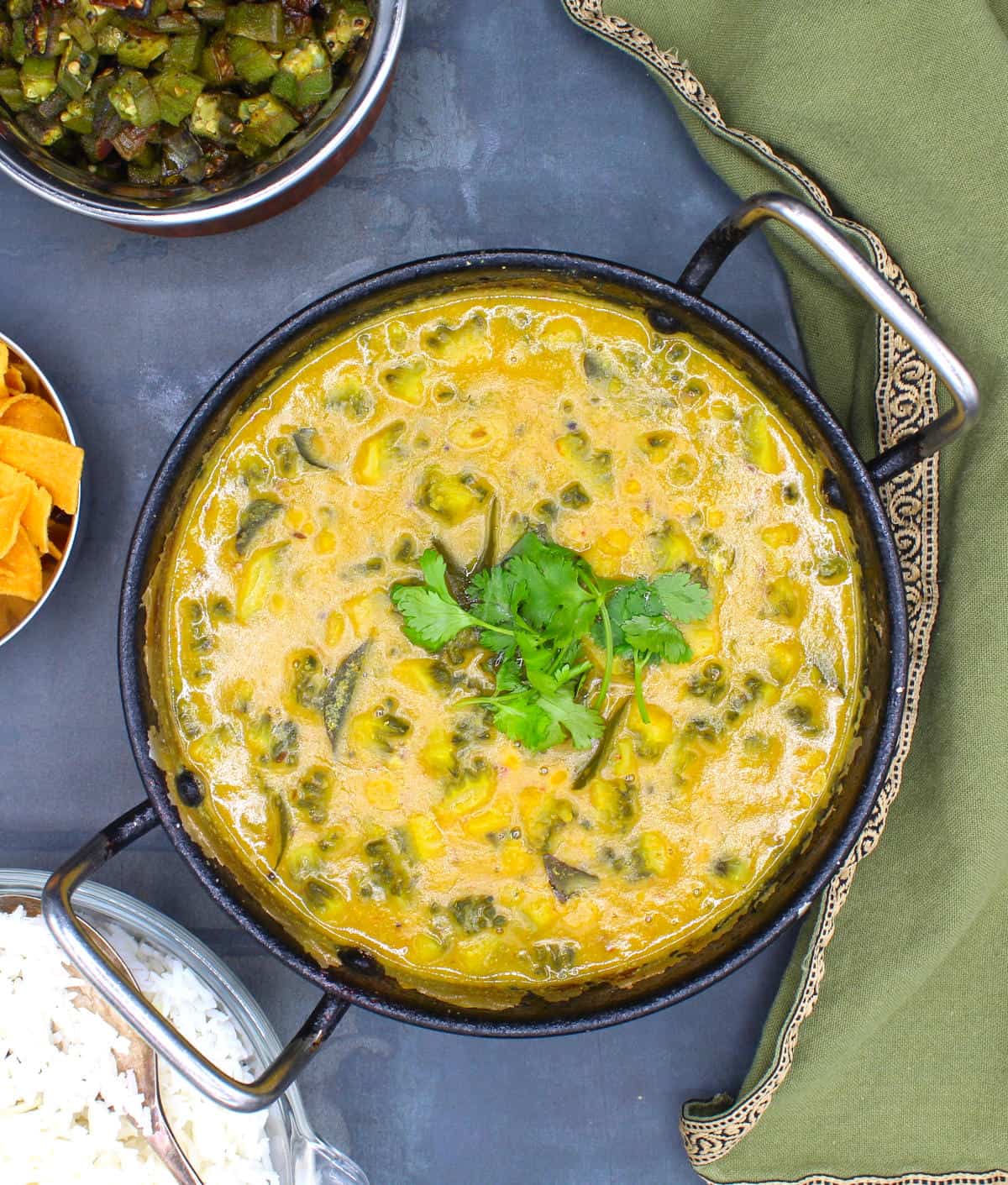I have for you today a recipe that is one of my favorites and perhaps one of the healthiest foods I cook in my kitchen: a bitter gourd or pavakkai pitlai – a delicious South Indian dal that goes fabulously with rice. Some of you might immediately dismiss this recipe as one you’ll never cook, even if you love Indian food. Perhaps it sounds a bit too exotic. But do hear me out before you make up your mind and who knows? You might be a little more convinced to make a trip to the Indian or Asian supermarket and buy a bunch of these healthful veggies.
Getting to know the bitter gourd/bitter melon
Bitter gourds or bitter melons (also called balsam pears) might be unfamiliar to most of you reading this, but they are related to veggies you already love, including cucumbers and zucchini. They are commonly eaten in some Asian countries, including Japan, China and India (where they go by karela/pavakkai/karle, among other names). What makes bitter gourd a food worth embracing, no matter where you live, is that this is one of the healthiest superfoods known to mankind, with a nutritional profile that would be the envy of every other vegetable. Bitter melons got some global publicity when CNN’s Sanjay Gupta traveled to Okinawa, Japan, a few years back and highlighted this power veggie (called “goya” locally) as one of the superfoods that contribute to the Okinawans’ famous longevity and healthfulness. Ayurveda also embraces karela’s healthful properties, wholeheartedly recommending its use as both food and medicine. It is considered a tridoshic, meaning it can correct all imbalances related to the vatta, pitta and kapha doshas. Despite all this, and our collective penchant for jumping on the latest superfood, bitter gourds have remained largely unexplored here in the west and they remain somewhat underrated even in the nations that consume them. Perhaps because this is a difficult vegetable to figure out–and love. For one, it has one of the weirdest appearances of any vegetable out there–dark green and warty all over. Cut it open and you come upon skimpy white flesh with ugly, large, flat red or white seeds. What do you do with this monstrosity, you might wonder. If you are brave enough to go ahead and cook the bitter gourd, you will almost certainly be put off at first by its intense bitterness. This is not the honeyed bitterness of fenugreek or the pungent bitterness of mustard. It’s an all-out, eat-me-if-you-dare, unabashed bitterness that dominates your tastebuds. But while karela’s bitterness might be off-putting to a new eater, it is also its secret sauce: the reason why it is exactly the kind of superfood you should grow to love if you want to live to be a hundred…or at least to live healthfully for however long it is you wish you could live. Bitter melons owe their bitterness to bioactive compounds that, studies show, can help lower blood sugar levels, making this a great food for diabetics and low-glycemic eaters. These warty gourds are also packed with polyphenols, which help reduce inflammation in the body, and with soluble fiber that healthy gut bacteria love. Some lab studies have also shown bitter gourd could be helpful in fighting cancer, including leukemia and breast cancer. Bitter melons can also aid weight loss, by speeding up fat metabolism. And they are packed with vitamins A and C and zinc, among other micronutrients. Now, would you be willing to overlook that warty appearance and even that bitterness? If you are, I have for you today a recipe that you will grow to love as much as we do, guaranteed. This karela pitlai or pavakkai pitlai. This is a south Indian dal, made by cooking the bitter melons with tuvar dal or split pigeon peas, and spices that perfectly complement the melons’ unique flavor. One of the things Indian cooks do to convince people to eat karela is to douse it in fat or sugar. They deep-fry the karela, or stuff it with peanuts and jaggery. As delicious as all that can be, what’s the point in starting with a healthy veggie and making it unhealthy? With this pitlai you don’t just get the healthfulness, but you get tons of deliciousness. Coconut milk and a hint of jaggery or sugar, along with the dal and spices, nicely mellows down the bitterness of the karela. Check to get new recipe updates by email.
What is a pitlai?
A pitlai (pronounced pit-lay) is a south Indian dal that’s thicker than the other famous south Indian dal you might be familiar with – sambar (or kuzhambu), the orange-red dal with veggies that’s usually served as a side along with chutney when you order a dosa at a south Indian or Udupi restaurant. Pitlai, which usually has coconut in it, is typically served with idli or rice. It is especially delicious with curd rice.
Why you’ll love this Pavakkai Pitlai
Delicious. The ingredients here work together to make this a tasty dish that will make you love this veggie–or at least help you begin to love it. Healthy. Lentils and one of the healthiest veggies on the planet? It’s a no-brainer. This dish also balances out all of the six tastes of ayurveda magnificently: bitter, sweet, sour, salty, spicy and astringent. Easy. Making a dal is never difficult and while this one requires some roasting of spices and blending, none of it is difficult work and I will walk you through it. At the end you’ll have a delicious, healthy dish – and a halo of achievement around your head. Unique. If you love eating at Indian restaurants, it is well worth trying out an Indian dish that you’ll never find in one.
How to make Pavakkai Pitlai
Store
Indian foods like dals are best eaten fresh–that’s also when they are considered to be at their healtiest. That said, in the real world today most of us do not have the bandwidth to cook food just before we eat it. So I’d recommend making this eating the day you plan to eat it, and then storing leftovers in the refrigerator for 2-3 days.
What to serve with Pavakkai Pitlai
I like serving this pitlai with rice and a simple dry curry or sabzi, like okra sabzi. Potatoes are a great complement to bitter melons and you’d do really well if you were to make a potato side like these Bombay Potatoes to eat the pitlai and rice with. Also serve something crispy, like poppadum, on the side. You can also serve the pitlai with idli or dosa.
More south Indian lentil recipes
Recipe card
